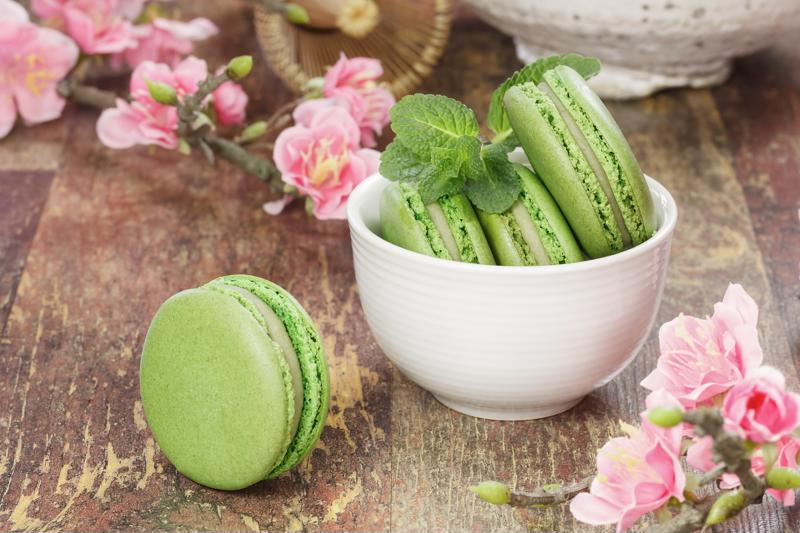Keeping track of food trends can feel like a full-time job by itself at times, for chefs and students at culinary schools in Texas alike. Matcha, a type of green tea, is one of many foods that has grown in popularity in recent years. Let’s look at exactly what matcha is, why it’s become more common and some options for using it in unique and inspired ways in your own menus.
 Matcha can be incorporated into foods ranging from crepes and coconut smoothies to macarons.
Matcha can be incorporated into foods ranging from crepes and coconut smoothies to macarons.What is matcha?
The simple definition of matcha is that it’s green tea, which comes from the camellia sinensis tree (as do all other major forms of tea, with differences in processing to create distinct final products). Matcha is set apart from the more broad category of green tea by a few key processes used during growing and harvesting:
- Matcha is grown under shade, as Time pointed out. This allows for better nutrient production, which offers an additional benefit to drinkers and eaters of matcha.
- Matcha has its stems and veins removed by hand, then is ground into a very fine powder.
- Matcha powder is poured into a hot liquid, like water or milk, to brew the tea. As opposed to a tea bag – which allows the drinker to remove the larger solid particulate after flavor, caffeine and other components are extracted – matcha offers a more flavorful experience.
Why is matcha popular?
Matcha has a number of attractive qualities that appeal to many different sensibilities. While research on some of the strongest health-related claims isn’t yet completed, there is a general understanding that matcha has a high level of antioxidants. There may also be connections between lowered blood pressure and LDL cholesterol, which can influence health-motivated customers. Matcha also has a higher level of caffeine than regular green tea, which is attractive to those who like to use tea as a pick-me-up in the morning and throughout the day. Additionally, matcha has a stronger flavor than other teas and involves a unique method of preparation, both of which can be especially attractive to those who like to seek out new and different foods.
The Financial Times pointed to flavor and potential health benefits as reasons why the beverage has seen increased popularity in places such as New York City in recent years. While it’s always difficult to measure enduring attachment to a food or ingredient after its initial ascent to popularity, business consulting group Grand View told the Financial Times that matcha won’t be wiped out entirely. It’s very likely that it’s here to stay as a recognizable and sometimes desirable ingredient.
How can I use matcha in my menus?
Offering matcha tea is one of the simplest and most recognizable approaches to incorporate this item into your menu. The same matcha powder used for teas can just as easily be added to a variety of other dishes, so providing the tea itself is also an easy way to keep the ingredient on hand.
Chowhound noted that the finely ground nature of matcha and its earthy, lightly sweet flavor both lend themselves to use in spice mixes and as a flavorful dusting over crepes and a variety of other foods. Matcha mixes especially well with similar flavors, such as nutmeg, cardamom and coconut. Another possibility is to mix it with flour for making cakes and many similar baked goods.
Matcha can also be used similarly in a variety of sauces, drawing on its unique flavor to either star in a savory sauce or serve as a supporting member of the cast of herbs and spices. With so many options, one of the best things to do is simply start experimenting in your kitchen.
Students interested in culinary schools in Texas can learn about how to incorporate ingredients with rising popularity into their menus, along with many other tasks, with the Auguste Escoffier School of Culinary Arts diploma program in Austin. To learn more, get in touch with us today!

